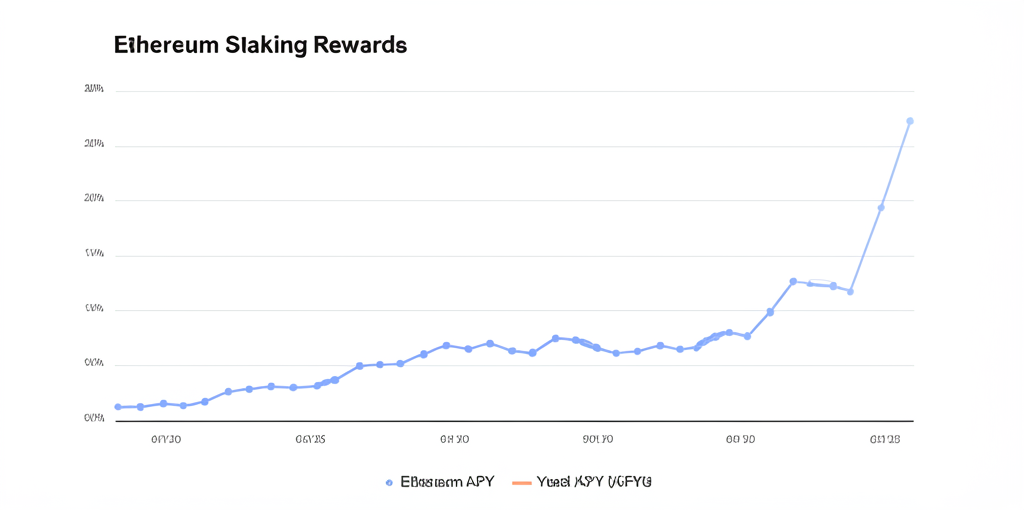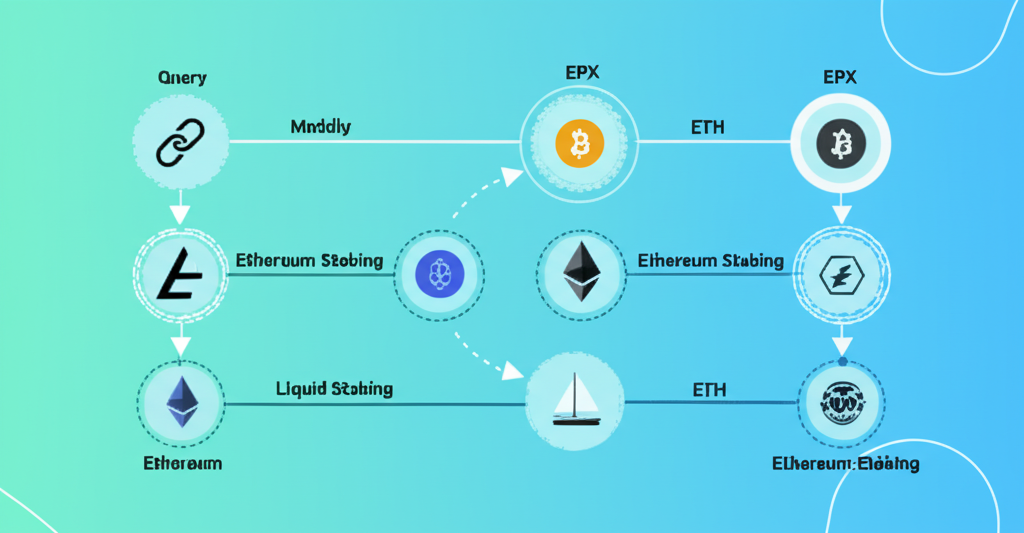
Staking vs Mining: What's the Difference?
Table of Contents
Introduction: The Evolution of Blockchain Consensus
Blockchain technology has revolutionized how we think about trust and consensus in digital systems. At the heart of every blockchain lies a consensus mechanism—the protocol that allows distributed network participants to agree on the state of the blockchain without relying on a central authority.
Two of the most prominent consensus mechanisms are Proof of Work (mining) and Proof of Stake (staking). These approaches represent fundamentally different philosophies for achieving consensus, with significant implications for energy consumption, security, economics, and participation.
Proof of Work (Mining)
Computational competition to solve cryptographic puzzles
Proof of Stake (Staking)
Economic stake to validate transactions and create blocks
In this comprehensive guide, we'll explore the key differences between mining and staking, examining how each works, their respective advantages and disadvantages, and the implications of choosing one consensus mechanism over the other. Whether you're a blockchain enthusiast, investor, or developer, understanding these differences is crucial for navigating the evolving landscape of blockchain technology.

Fundamentals of Consensus Mechanisms
The Byzantine Generals Problem
At their core, both mining and staking are solutions to the fundamental challenge of achieving consensus in a decentralized network where participants don't inherently trust each other. This is often framed as the "Byzantine Generals Problem" in computer science.
While both mechanisms aim to solve this problem, they take fundamentally different approaches: mining relies on computational work as proof of trustworthiness, while staking uses economic investment as a guarantee of honest behavior.
Key Concepts in Consensus
Sybil Resistance
Both mechanisms prevent Sybil attacks (where one entity creates multiple identities) but in different ways. Mining makes it computationally expensive to create multiple identities, while staking makes it financially costly.
Fork Choice Rules
These are the rules that determine which chain is the "correct" one when the blockchain splits. In PoW, it's typically the longest chain with the most cumulative work. In PoS, it's often the chain with the most stake weight behind it.
Finality
This refers to the guarantee that once a transaction is completed, it can never be altered or reversed. PoW offers probabilistic finality (becoming more certain over time), while many PoS systems offer deterministic finality.
Historical Context
Proof of Work was introduced by Bitcoin in 2009 as the first solution to the Byzantine Generals Problem in a fully decentralized digital currency. Proof of Stake was proposed in 2011 as an energy-efficient alternative and has been implemented in various forms since then, with Ethereum's transition in 2022 being one of the most significant adoptions.
How Mining and Staking Work
To understand the differences between mining and staking, it's essential to grasp how each process works at a fundamental level. Let's explore the mechanics of both consensus mechanisms:
Proof of Work (Mining)
How Mining Works
The Mining Process Explained
- 1Transaction collection: Miners gather pending transactions from the network's mempool into a candidate block.
- 2Cryptographic puzzle: Miners compete to find a value (nonce) that, when combined with the block data and hashed, produces a result below a specific target (the difficulty).
- 3Solution broadcasting: When a miner finds a valid solution, they broadcast the block to the network for verification.
- 4Verification and consensus: Other nodes verify the solution and add the block to their copy of the blockchain if valid.
- 5Reward distribution: The successful miner receives newly minted cryptocurrency and transaction fees as a reward.
Proof of Stake (Staking)
How Staking Works
The Staking Process Explained
- 1Stake deposit: Participants lock up a certain amount of cryptocurrency as stake to become validators.
- 2Validator selection: The protocol selects validators to create new blocks, with selection probability proportional to their stake.
- 3Block proposal: Selected validators create and propose new blocks containing transactions.
- 4Attestation and validation: Other validators attest to the validity of proposed blocks, forming consensus.
- 5Reward distribution: Validators earn rewards for successful block proposals and attestations, proportional to their stake.
Key Operational Differences
Miners solve cryptographic puzzles
Validators selected based on stake
High electricity consumption
Minimal electricity usage
Cost of attack = hardware + energy
Cost of attack = tokens + slashing risk
First to solve gets full block reward
Predictable returns based on stake
Energy Consumption Comparison
One of the most significant differences between mining and staking is their energy consumption. This aspect has become increasingly important as concerns about the environmental impact of blockchain technology have grown.

The Energy Gap
- •Proof of Work: Bitcoin's PoW network consumes approximately 110-170 TWh per year, comparable to the energy usage of countries like Argentina or Norway.
- •Proof of Stake: Ethereum's PoS network consumes approximately 0.01 TWh per year—a reduction of over 99.95% compared to its previous PoW implementation.
This dramatic difference in energy consumption is one of the primary reasons many blockchain projects are moving toward Proof of Stake or other energy-efficient consensus mechanisms.
Energy Consumption Comparison
Mining Energy Results
This calculator provides simplified estimates for educational purposes. Actual energy consumption varies based on hardware specifics, network conditions, and other factors. The mining calculation is based on Bitcoin-like PoW systems, while the staking calculation represents Ethereum-like PoS systems.
Environmental Implications
The environmental impact of consensus mechanisms extends beyond just energy consumption:
- •Carbon footprint: PoW networks can have significant carbon footprints, depending on the energy sources used for mining.
- •E-waste: Mining hardware becomes obsolete quickly, contributing to electronic waste.
- •Renewable energy usage: Some mining operations are increasingly powered by renewable energy, which can mitigate environmental concerns.
Security Models: How Mining and Staking Protect Networks
Both mining and staking provide security for blockchain networks, but they do so through fundamentally different mechanisms. Understanding these security models is crucial for evaluating the robustness of different blockchain networks.
Security Models Compared
Security Guarantees
- • Security tied to physical resources (hardware and energy)
- • Attacks require significant upfront investment
- • Hardware can be repurposed or sold after attack
Attack Vectors
- • 51% attacks to double-spend or censor transactions
- • Selfish mining strategies
- • Network partitioning attacks
Cost of Attack
Attack Costs and Game Theory
Proof of Work Attack Economics
In PoW, the cost of attacking the network is tied to the hardware and energy required to control 51% of the network's hash power:
- •High upfront capital expenditure for mining equipment
- •Ongoing operational costs (electricity, cooling, maintenance)
- •Hardware can be repurposed or sold after an attack
Proof of Stake Attack Economics
In PoS, the cost of attacking the network is tied to the value of the cryptocurrency itself:
- •Need to acquire a large amount of the cryptocurrency (often 51% or more)
- •Risk of slashing (losing stake) if malicious behavior is detected
- •Attack would likely devalue the cryptocurrency, reducing the value of the attacker's stake
Security Trade-offs
Neither security model is objectively superior—each has strengths and weaknesses:
PoW Strengths
- •Proven security model with over a decade of success (Bitcoin)
- •Physical resource requirements create a tangible security barrier
- •No reliance on the value of the cryptocurrency itself for security
PoS Strengths
- •Direct economic penalties for malicious behavior (slashing)
- •Self-reinforcing security as network value increases
- •Potential for stronger social recovery mechanisms after attacks
Economic Implications of Mining vs Staking
The choice between mining and staking has profound economic implications for both individual participants and the broader cryptocurrency ecosystem. These economic differences influence everything from token distribution to market dynamics.
Issuance and Inflation

Mining and staking typically employ different approaches to token issuance and inflation:
- •Proof of Work: Often features high initial issuance that decreases over time (e.g., Bitcoin's halving events), creating a disinflationary or deflationary model.
- •Proof of Stake: Typically has lower, more consistent issuance rates tied to the percentage of tokens staked, often resulting in lower inflation.
For example, Ethereum's transition from PoW to PoS reduced its issuance rate from approximately 4.5% to 0.5-1% annually.
Reward Distribution and Participation
Mining Economics
- •Winner-takes-all rewards: Only the miner who solves the block receives rewards, creating a competitive environment.
- •Mining pools: Smaller miners often join pools to receive more consistent but smaller rewards, reducing individual variance.
- •Geographic concentration: Mining tends to concentrate in regions with cheap electricity and favorable regulations.
- •Capital depreciation: Mining equipment becomes obsolete over time, requiring ongoing reinvestment.
Staking Economics
- •Proportional rewards: Validators receive rewards proportional to their stake, creating a more predictable return on investment.
- •Staking pools and delegation: Smaller holders can participate through pools or delegation, democratizing access to rewards.
- •Capital preservation: Staked assets maintain their value and can be withdrawn, unlike depreciating mining hardware.
- •Opportunity cost: Staked assets are often locked up and cannot be used for other purposes (though liquid staking solutions are changing this).
Market Dynamics
Impact on Token Value and Liquidity
Mining Effects
- •Miners often need to sell a portion of rewards to cover operational costs, creating consistent selling pressure
- •Mining difficulty adjustments can create market cycles as profitability changes
- •No direct mechanism for reducing circulating supply
Staking Effects
- •Staking locks up tokens, reducing circulating supply and potentially increasing scarcity
- •Lower operational costs mean less need to sell rewards, potentially reducing selling pressure
- •Staking yields can compete with DeFi and traditional finance yields, affecting capital flows
Centralization Concerns in Mining and Staking
Both mining and staking face centralization pressures, though they manifest in different ways. These centralization tendencies can potentially undermine the decentralized nature of blockchain networks.

Mining Centralization
- •ASIC dominance: Specialized mining hardware (ASICs) has led to centralization in hardware manufacturing, with a few companies controlling the market.
- •Mining pools: Hash power often concentrates in a few large mining pools, potentially giving them outsized influence over the network.
- •Geographic concentration: Mining operations tend to cluster in regions with cheap electricity, creating geographic centralization.
Staking Centralization
- •Wealth concentration: Those with more tokens can stake more and earn more rewards, potentially leading to a "rich get richer" dynamic.
- •Staking services: Many users delegate their stake to third-party services, which can lead to concentration of validation power.
- •Exchange staking: Cryptocurrency exchanges often offer staking services, potentially controlling large portions of staked tokens.

Mitigating Centralization
Various approaches are being developed to address centralization concerns in both systems:
For Mining
- •ASIC-resistant algorithms to enable more democratic participation
- •Decentralized mining pools with more transparent governance
- •Renewable energy mining to reduce geographic concentration
For Staking
- •Distributed validator technology to split validation responsibilities
- •Client diversity to prevent concentration in software implementation
- •Decentralized staking pools with governance rights for participants
Real-World Examples: Mining and Staking in Practice
Examining how mining and staking operate in major blockchain networks provides valuable insights into their practical differences and real-world performance.
Prominent PoW Networks
Bitcoin
- •The original and largest PoW blockchain
- •Uses SHA-256 hashing algorithm
- •Mining is dominated by ASIC hardware and large mining pools
- •Block rewards halve approximately every four years
Litecoin
- •Uses Scrypt algorithm, initially designed to be more accessible to consumer hardware
- •Faster block times (2.5 minutes vs. Bitcoin's 10 minutes)
Monero
- •Uses RandomX algorithm designed to be ASIC-resistant
- •Focuses on CPU mining to promote decentralization
- •Regular algorithm changes to prevent ASIC development
Prominent PoS Networks
Ethereum (post-Merge)
- •Transitioned from PoW to PoS in September 2022 ("The Merge")
- •Requires 32 ETH to run a validator
- •Implements slashing penalties for malicious behavior
- •Has a growing ecosystem of liquid staking providers
Cardano
- •Uses Ouroboros PoS protocol
- •Delegation-based system with no minimum staking requirement
- •No slashing; instead uses reputation systems
Solana
- •Combines PoS with Proof of History for high throughput
- •Higher hardware requirements for validators
- •Delegation model with approximately 1,000 active validators
Case Study: Ethereum's Transition
The Merge: From PoW to PoS
Ethereum's transition from Proof of Work to Proof of Stake in September 2022 provides a unique case study of both consensus mechanisms operating on the same blockchain at different times.
Pre-Merge (PoW)
- •Energy consumption: ~112 TWh/year
- •Issuance rate: ~4.5% annually
- •Block time: Variable (~13 seconds average)
- •Finality: Probabilistic (several minutes)
Post-Merge (PoS)
- •Energy consumption: ~0.01 TWh/year (99.95% reduction)
- •Issuance rate: ~0.5-1% annually
- •Block time: Consistent (12 seconds)
- •Finality: Deterministic (~15 minutes)
This transition demonstrated both the technical feasibility of switching consensus mechanisms and the significant improvements in energy efficiency and economic parameters that can result from such a change.
The Future of Consensus Mechanisms
The debate between mining and staking continues to evolve, with innovations emerging in both approaches and new hybrid models being developed. Understanding these trends is essential for anticipating the future direction of blockchain technology.

Evolving Trends
- •Sustainability focus: Growing environmental concerns are driving interest in energy-efficient consensus mechanisms, favoring PoS and other alternatives to PoW.
- •Scalability solutions: Both PoW and PoS are exploring layer-2 scaling solutions to address throughput limitations.
- •Regulatory scrutiny: Increasing regulatory attention to cryptocurrency energy usage may influence the adoption of different consensus mechanisms.
Innovations and Hybrid Approaches
PoW Innovations
- •Green mining initiatives using renewable energy
- •Mining algorithms that serve useful computational purposes
- •More efficient ASIC designs with lower energy requirements
PoS Innovations
- •Liquid staking derivatives for capital efficiency
- •Distributed validator technology for improved decentralization
- •Single-slot finality for faster transaction confirmation
Hybrid and Alternative Models
- •Proof of Authority for permissioned networks
- •Delegated Proof of Stake for higher throughput
- •Proof of History for time synchronization
- •Proof of Space and Time using storage resources
The Coexistence Question
A key question for the future is whether PoW and PoS will continue to coexist or if one will eventually dominate:
- •Specialization scenario: PoW and PoS could specialize for different use cases, with PoW focusing on high-value store of value applications and PoS on smart contract platforms and applications.
- •Convergence scenario: Hybrid models might emerge that combine elements of both approaches to leverage their respective strengths.
- •Replacement scenario: Environmental and economic pressures could lead to a broader shift away from PoW toward PoS and other energy-efficient alternatives.
Conclusion: The Significance of Consensus Mechanisms
The choice between mining and staking represents more than just a technical decision—it reflects fundamental values and priorities within blockchain ecosystems. Each approach offers distinct advantages and trade-offs that make them suitable for different use cases and contexts.
Key Takeaways
Proof of Work
- •Proven security model with over a decade of successful implementation
- •High energy consumption but potential for renewable energy integration
- •Hardware-based security that doesn't depend on token value
- •Higher barriers to entry but potentially more decentralized validation
Proof of Stake
- •Energy-efficient with minimal environmental impact
- •Economic security model with direct penalties for malicious behavior
- •More accessible participation through pooling and delegation
- •Evolving ecosystem with innovations like liquid staking
As blockchain technology continues to mature, the debate between mining and staking will likely evolve as well. What remains clear is that both approaches have contributed significantly to the advancement of decentralized systems, and both will continue to play important roles in the blockchain ecosystem.
Whether you're a developer choosing a consensus mechanism for a new project, an investor evaluating different blockchain networks, or simply a blockchain enthusiast seeking to understand the technology better, appreciating the nuances of mining and staking is essential for navigating the complex and rapidly evolving world of blockchain technology.
Further Learning
To deepen your understanding of consensus mechanisms and their implications, consider exploring these related topics:
- •What is Ethereum Staking? - A comprehensive guide to staking on the Ethereum network
- •Environmental Impact of Ethereum Staking - An in-depth look at the environmental benefits of Proof of Stake
- •Future of Ethereum Staking - Exploring upcoming developments in the Ethereum staking ecosystem
Related Articles


Environmental Impact of Ethereum Staking
How Ethereum's transition to Proof of Stake affects its environmental footprint
Read More